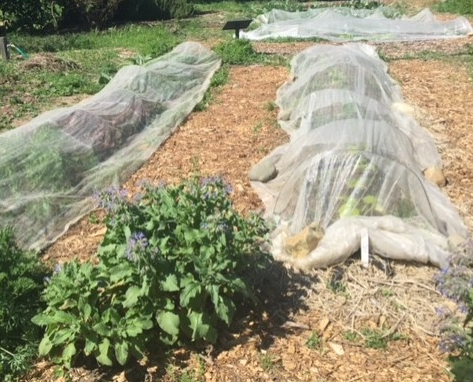- Author: Barbara Kissinger Santos
My cold season garden is planted with plenty of broccoli and cauliflower. Last week I noticed holes chewed in the leaves. I looked underneath and sure enough, I have cabbage loopers. It's early in the season so only 3 leaves on 2 of my 12 plants are affected, but clearly if I want a decent crop, I'm going to need to be diligent.
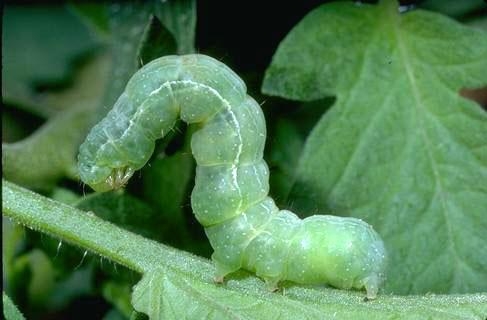
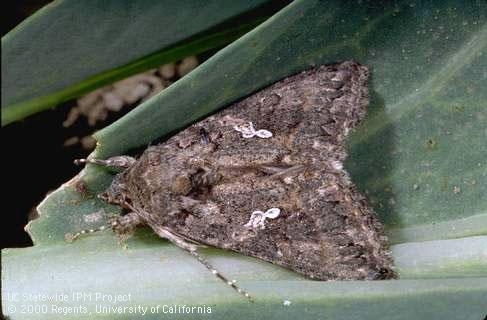
What are cabbage loopers and cabbageworms?
Cabbage loopers are a caterpillar that feasts on Cole crops. Cole crops are a group of vegetables that include cabbage, broccoli, cauliflower, Brussel sprouts, collards, and kale. Cabbage loopers are green, up to an inch and a half long, usually with a narrow white stripe on each side and narrow, pale lines down the back. They can be distinguished from other caterpillars that feed on cole crops, such as the imported cabbageworm, by their looping movement. They move by arching the middle portion of their body, pulling the rear end forward and then propelling the front end forward. Imported cabbageworms are smaller, have a hairier appearance and often have one faint yellow orange stripe down their backs.
The caterpillar form of the cabbage looper moth is mottled brown or gray color. These moths lay single eggs on the underside of older cole crop leaves. The caterpillars emerge to eat leaves, mostly mature foliage, and eventually spin a cocoon on the underside of mature leaves, in the crown of the plant or in debris on the ground. The moths emerge to repeat the life cycle. Imported cabbageworms are the caterpillar form of the imported cabbageworm butterfly, a white butterfly with one or more black spots on each wing. They have a similar lifecycle to cabbage loopers.
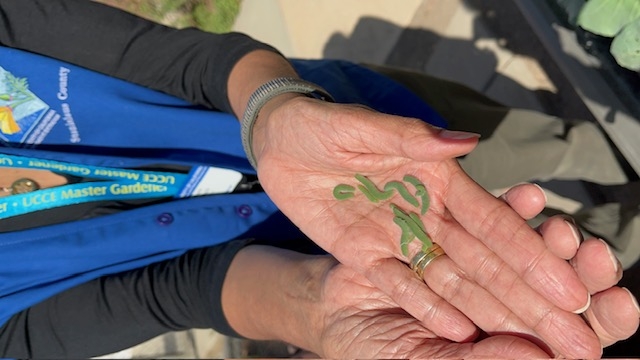
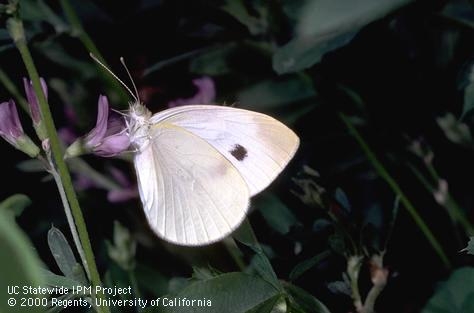
So What's the Problem?
Cabbage loopers and imported cabbageworms eat leaves and will bore holes in developing cabbage, cauliflower, broccoli and lettuce damaging the fruit of cole crops and leaving their bodies and frass (or insect poop). Newly planted vegetable garden plants can disappear quickly if caterpillars aren't controlled.
How Do I Control Them?
You can prevent these pests from laying eggs by using floating row covers. If you can't do this, examine plants with leaf damage and pick off caterpillars before they do more damage. If you can't find the caterpillars, look for their frass. Stand still, looking slowly around at your plants, giving special attention to the undersides of the leaves.
If you do this diligently, it may be all you need to do. There may be natural enemies such as parasitic wasps or tachinid flies present in your garden to help reduce pest numbers. If these methods aren't sufficient, you can use a less toxic pesticide called BT or Bacillus thuringiensis. Although this product is organic, always follow directions regarding dosage, when to apply, and safety protocols. For more information visit the following UC IPM pages.

For more information, visit the following UC IPM webpages:
Cabbage loopers https://ipm.ucanr.edu/PMG/GARDEN/VEGES/PESTS/loopers.html
Imported cabbageworm https://ipm.ucanr.edu/PMG/GARDEN/VEGES/PESTS/importcabwrm.html
Parasites of insect pests https://ipm.ucanr.edu/QT/parasitesinsectcard.html
Barbara Kissinger Santos has been a UC Cooperative Extension Master Gardener in Stanislaus County since 2024.

